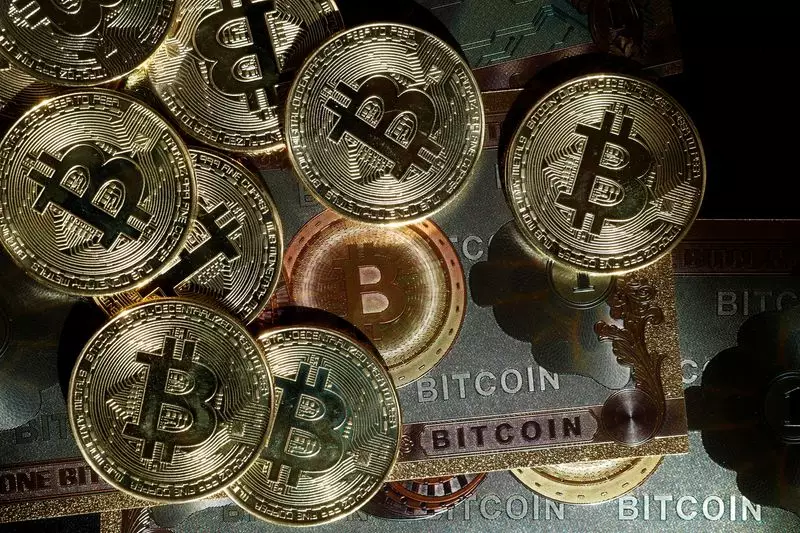In recent financial developments, Bitcoin has emerged as a significant player in the market, reaching nearly its highest values in a month on Monday. This price surge comes in the wake of the Federal Reserve’s unprecedented rate cut, raising new questions about the impact of traditional monetary policies on emerging digital currencies. While Bitcoin garners attention for its upward trajectory, the broader currency market remains largely stagnant, especially with the Japanese yen encountering barriers to gain momentum due to various economic factors.
As the U.S. dollar displays resilience against the yen, the currency exchange dynamics continue to shroud the markets with uncertainty. Following the Fed’s policy meetings, where a significant 50 basis point rate cut was implemented, the dollar reached its highest level in two weeks against the yen, peaking at 144.50. Despite fluctuations, the yen has struggled to capitalize on prior gains, reflecting the complicated economic landscape fueled by Japan’s holidays and the Bank of Japan’s (BOJ) decision to maintain interest rates. Such policy decisions have stifled further appreciation in the yen, which managed to increase only modestly by 1.4% this month.
The perception of a strengthening U.S. dollar, bolstered by expectations of further Fed rate cuts and burgeoning U.S. equities, is central to the ongoing currency trends. With the entirety of Japan pausing for the Autumnal Equinox, market participants have turned their focus to the implications of monetary policies as they engage in trading activities largely influenced by the Fed’s strategies.
Market observers maintain a keen interest in the future trajectory of U.S. monetary policy. Following the significant rate reduction, traders have positioned themselves in anticipation of additional rate cuts, with expectations set for 75 basis points by the end of the year and nearly 200 by December 2025. This ongoing speculation has been reflected in the steepening U.S. Treasury yield curve in the aftermath of the Fed’s decision. Goldman Sachs has noted that the recent rate cut potentially eliminates market fears of an impending U.S. recession, providing a breath of optimism amidst otherwise cautious sentiment.
Furthermore, a majority of economists surveyed anticipate two additional modest rate cuts in the Fed’s final meetings for the year, reinforcing the prevailing narrative that the central bank is committed to fostering a conducive economic environment. These expectations have elated risk assets such as Bitcoin, propelling it upwards by 0.8% and placing it right above the $63,200 mark—close to recent highs.
While the U.S. markets grapple with their own dynamics, Japan faces a critical juncture in its political landscape. The upcoming vote to select a new prime minister within the ruling Liberal Democratic Party poses potential complexities for the BOJ’s monetary strategy. The frontrunners are vying for a shift in monetary policy, with varying perspectives on what should be prioritized regarding economic growth. Notably, a potential election in the near future has fueled speculation regarding the direction of Japan’s fiscal discipline.
Analysts at Barclays caution that should the more reflationist candidate, Sanae Takaichi, succeed, it may complicate the BOJ’s policy normalization efforts, putting downward pressure on the yen as expectations for rate hikes dampen. These political machinations underscore the intricate relationship between economic policy and currency valuation, ensuring that investors remain vigilant in their assessments.
On another front, the Bank of England’s recent decision to keep interest rates steady provides additional context to the broader economic scenario. With a governor voicing caution against rapid interest rate cuts, the British pound’s slight decline reinforces the notion that central banks globally are proceeding with measured approaches to monetary policy amidst fluctuating economic indicators.
Set against these backdrops, the juxtaposition of Bitcoin’s robust performance relative to traditional currencies like the yen and pound begs the question of what the future holds for digital assets. As economies navigate challenging waters of recovery and policy adjustment, Bitcoin may continue to carve out its niche as a safe haven for investors seeking refuge from conventional asset vulnerabilities.
As the international markets adapt to the evolving economic landscape dictated by significant policy maneuvers, stakeholders should remain astutely aware of the interplay between traditional and emerging financial assets. Bitcoin’s recent surge symbolizes a shift in investor confidence, whereas the struggles of the yen highlight the ongoing challenges faced by established currencies amidst changing political and economic frameworks.

